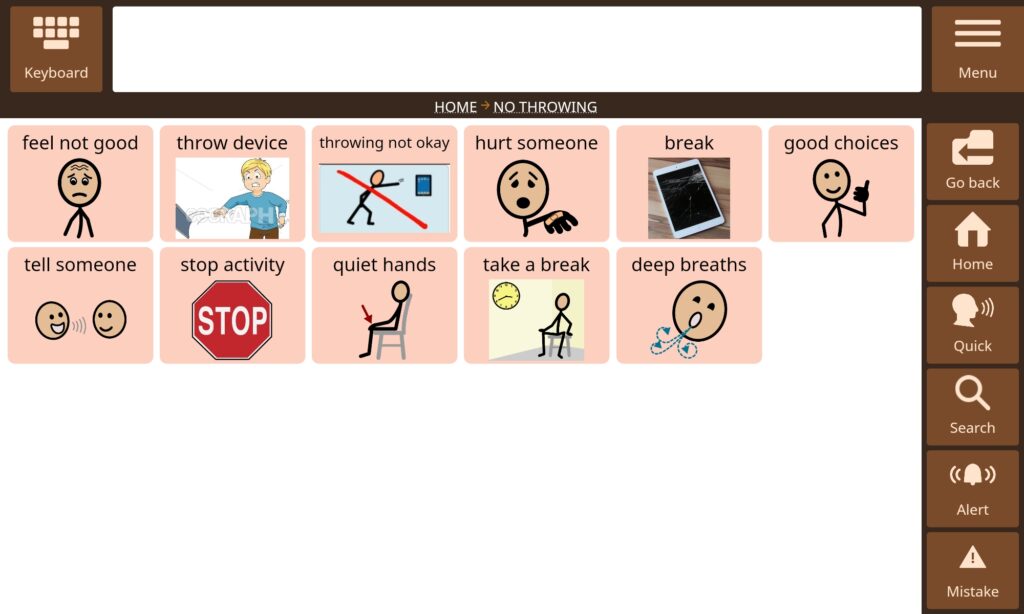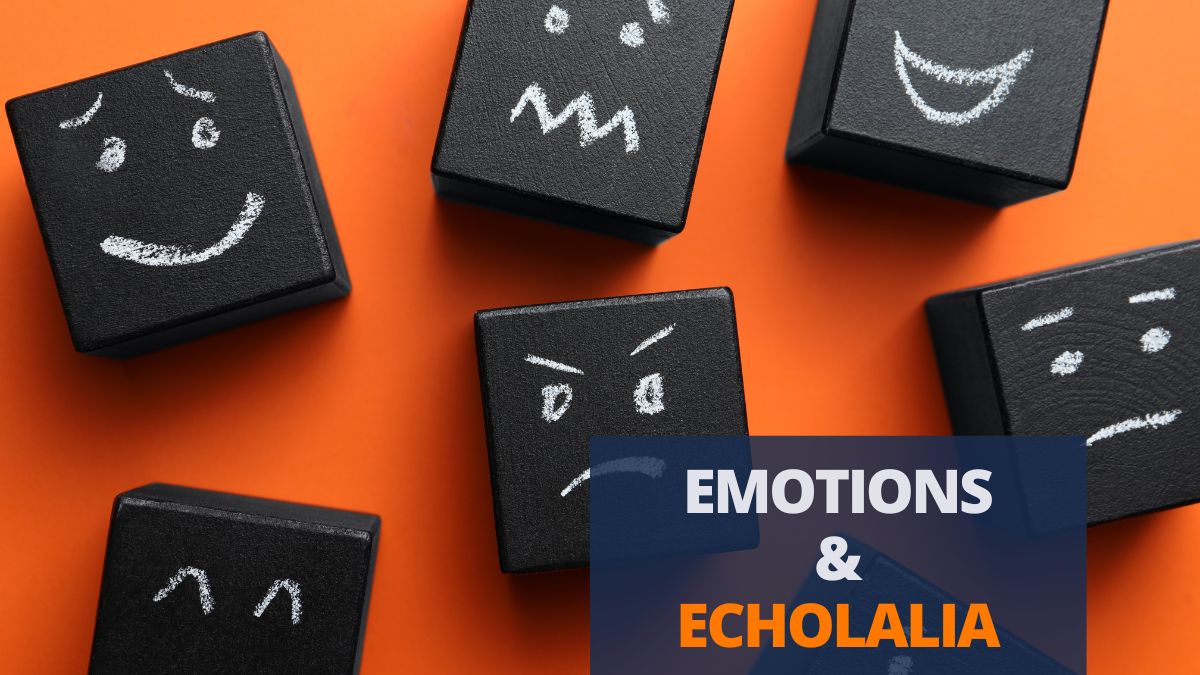We may have been in situations where the communicator throws the AAC device. What should we do when this happens? It is likely that this behavior is an indication of some other difficulty they are facing. There are a number of things that we can do to support them through it.
In this blog, Avaz’s resident SLP gives you an in-depth look into how you can work / be supportive when the communicator throws the AAC device.
A Common Issue
The following quote may be something you have heard or experienced first-hand. In this particular case, it was a special educator working with an AAC user that reported to me:
“My student has a habit of throwing things so if I give him the AAC device, he might throw it. The device is so expensive and can get damaged easily! So I will keep it with me and only show it to him during activity time”
On the one hand, this type of thinking may be fair. Because, in most cases, obtaining an AAC device is a challenging and effortful task. But that cannot stop us communication partners from using the device with the AAC user.
All the work we have put in so far was to empower the user’s communication skills. Putting the device away would mean taking away the AAC user’s voice. This would be extremely counterproductive to all that we have strived for.
How to Approach the Behavior
So, let us take the scenario where the AAC user throws the AAC device. You may also come across behaviors like banging, hitting or even mouthing the device. Instead of hiding the AAC device to prevent damage, why not take a moment to think? Here are some points to systematically understand the underlying issue. These will help you solve the problem, while also ensuring continued AAC modelling.
What does the behavior mean?
Most children exhibit challenging behaviors as a means to tell us that something is going on with them. It could be that their communication skills are not proficient enough to tell us what is going on. Hence, we will have to take the responsibility of finding out what is triggering the behavior.
A common trigger can be having high expectations from the AAC user. For example, asking too many questions, asking complex questions, not giving enough wait time, etc. Some other sensory triggers can also cause such behaviors. Here, the need to have a sense of movement or pressure within their bodies can push them to engage in such actions – so that they can feel calm again.
Take a video recording or have another person observe your interaction. This can help you notice any other triggers for the behavior. This is especially helpful to identify subtle triggers which could be overlooked when the session is going on.
Talk about it with AAC
Use the AAC device to talk to the AAC user about what is going on. Take a guess and comment on what they might be feeling. By doing this, you can create an opportunity for the AAC user to share with you how they are feeling and to tell you what went wrong.
You can say,
“I can see that you are FEELING UPSET”
“ WHY are you upset?” “WHAT HAPPENED?”
“ DON’T KNOW the answer?”
“ TOO DIFFICULT?”
Make a Social Story Using AAC
It is always a good idea to make a social story!
Use the AAC to not only talk about what is going on or why it happened. Use it also to discuss what we can do instead.
We have to help the AAC user to understand why we are asking them to stop. For instance, “device will break”, “somebody could get hurt” etc. Social stories can also be used teach more appropriate behaviors. E.g. take a break, practice calm deep breathing.
Remember, social stories need to be taught consistently. They can be referred to during all times of the day and not just when the challenging behavior happens. Here is an example of a social story to address the ‘throwing’ behavior. You can personalize this story depending on the AAC user that you are working with.


Preparation & Mitigation Measures
A lot of our concerns are to do with the consequences of throwing, banging etc. These include damage to the device, loss of data etc. These concerns can be addressed with prior preparation. Some steps can also help mitigate unavoidable circumstances. Here are some preparation and mitigation measures:
Put on Armour
Cover the iPad or tablet that you are using with a strong and sturdy case. In addition, consider using a protective screen guard. Most online shopping websites, e.g. Amazon, Flipkart, have a range of options to choose from. You can also attach a strap to the device so it can be easily and safely carried around.
Back-up your data
Most AAC apps will have a tool to back-up and store your app’s data in a safe space for easy retrieval. Back-ups are a good way to make sure that you always have a copy of the personalised words and sentences that you helped put together for your AAC user.
No high-tech? Use low-tech
Most AAC apps will have the function to print paper copies of folders that you created in the app. Hence, you can always have an alternative AAC system to use when the AAC device is not available. This ensures that even if the AAC device is not working, AAC modelling can keep going.
Contact Support
When all else fails, contact Support!
The support team of the app that you are using will be experts in handling damage to devices and loss of data. So if your device has crashed and you cannot get it to work, contact the support team and get help on how to fix the problem.
Now You Are Better Prepared!
In summary, even with all the protective measures sometimes it happens that a user throws the AAC device. They may get damaged. Hopefully, this article helps you tackle this problem without having to take away the device from the AAC user. With time, the AAC user will understand and appreciate the value of the AAC device for communication. When that happens, these behaviors will become a thing of the past.
WRITTEN BY
Nayantara Nambiar, MSP, BASLP
Speech Language Pathologist
Trained in India and Australia, I am passionate about supporting people with communication and swallowing difficulties. Equipped with experience in Rehabilitation, School and Early Intervention settings, I strive to provide a holistic intervention approach tailor-made for my clients and their families.


Besides Avaz AAC, we provide a whole host of exciting products & services. Use the buttons below to explore Avaz!



